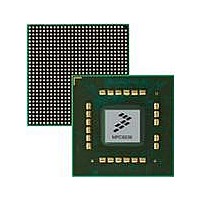MPC8536DS Freescale Semiconductor, MPC8536DS Datasheet - Page 615

MPC8536DS
Manufacturer Part Number
MPC8536DS
Description
BOARD DEV SYSTEM MPC8536E
Manufacturer
Freescale Semiconductor
Series
PowerQUICC III™r
Type
MPUr
Datasheets
1.MPC8536EBVTAVLA.pdf
(127 pages)
2.MPC8536EBVTAVLA.pdf
(1706 pages)
3.MPC8536DS.pdf
(2 pages)
4.MPC8536DS.pdf
(126 pages)
Specifications of MPC8536DS
Contents
Board, Software and Documentation
Processor Series
MPC85xx
Core
e500
Data Bus Width
32 bit
Maximum Clock Frequency
667 MHz
Operating Supply Voltage
- 0.3 V to + 1.21 V
Maximum Operating Temperature
+ 105 C
Data Ram Size
32 KB
Interface Type
SPI, USB
Program Memory Type
DDR2, DDR3, SDRAM
Core Size
32 Bit
Program Memory Size
544KB
Cpu Speed
1.5GHz
Digital Ic Case Style
BGA
No. Of Pins
783
Supply Voltage Range
0.95V To 1.05V
Rohs Compliant
Yes
For Use With/related Products
MPC8536
Lead Free Status / RoHS Status
Lead free / RoHS Compliant
- MPC8536EBVTAVLA PDF datasheet
- MPC8536EBVTAVLA PDF datasheet #2
- MPC8536DS PDF datasheet #3
- MPC8536DS PDF datasheet #4
- Current page: 615 of 1706
- Download datasheet (15Mb)
The I
must be set before allowing the I
I2CCR[TXAK] needs to be cleared again for subsequent I
setting up the I2CCR for the next transfer.
11.5.5
At the end of a data transfer, if the master still wants to communicate on the bus, it can generate another
START condition followed by another slave address without first generating a STOP condition. This is
accomplished by setting I2CCR[RSTA].
11.5.6
It is sometimes necessary to force the I
(even though SDA may already be driven, which indicates that the bus is busy). This can occur when a
system reset does not cause all I
while this I
used to force this I
11.5.7
In the slave interrupt service routine, the module addressed as a slave should be tested to check if a calling
of its own address has been received. If I2CSR[MAAS] is set, software should set the transmit/receive
mode select bit (I2CCR[MTX]) according to the R/W command bit (I2CSR[SRW]). Writing to I2CCR
clears MAAS automatically. MAAS is read as set only in the interrupt handler at the end of that address
cycle where an address match occurred; interrupts resulting from subsequent data transfers clear MAAS.
A data transfer can then be initiated by writing to I2CDR for slave transmits or dummy reading from
I2CDR in slave-receive mode. The slave drives SCL low between byte transfers. SCL is released when the
I2CDR is accessed in the required mode.
11.5.7.1
In the slave transmitter routine, the received acknowledge bit (I2CSR[RXAK]) must be tested before
sending the next byte of data. The master signals an end-of-data by not acknowledging the data transfer
from the slave. When no acknowledge is received (I2CSR[RXAK] is set), the slave transmitter interrupt
routine must clear I2CCR[MTX] to switch the slave from transmitter to receiver mode. A dummy read of
I2CDR then releases SCL so that the master can generate a STOP condition. See
Service Routine Flowchart.”
Freescale Semiconductor
1. Disable the I
2. Enable the I
3. Read the I2CDR
4. Return the I
2
C controller automatically generates a STOP if I2CCR[TXAK] is set. Therefore, I2CCR[TXAK]
2
Generation of Repeated START
Generation of SCL When SDA Low
Slave Mode Interrupt Service Routine
C module is coming out of reset and stays low indefinitely. The following procedure can be
Slave Transmitter and Received Acknowledge
2
2
C module to generate SCL so that the device driving SDA can finish its transaction:
2
MPC8536E PowerQUICC III Integrated Processor Reference Manual, Rev. 1
2
C module to slave mode by setting I2CCR to 0x80
C module by setting I2CCR to 0xA0
C module and set the master bit by setting I2CCR to 0x20
2
C devices to be reset. Thus, SDA can be driven low by another I
2
C module to receive the last data byte on the I
2
C module to become the I
2
C transactions. This can be accomplished when
2
C bus master out of reset and drive SCL
Section 11.5.8, “Interrupt
2
C bus. Eventually,
I
2
2
C Interfaces
C device
11-23
Related parts for MPC8536DS
Image
Part Number
Description
Manufacturer
Datasheet
Request
R
Part Number:
Description:
Manufacturer:
Freescale Semiconductor, Inc
Datasheet:
Part Number:
Description:
Manufacturer:
Freescale Semiconductor, Inc
Datasheet:
Part Number:
Description:
Manufacturer:
Freescale Semiconductor, Inc
Datasheet:
Part Number:
Description:
Manufacturer:
Freescale Semiconductor, Inc
Datasheet:
Part Number:
Description:
Manufacturer:
Freescale Semiconductor, Inc
Datasheet:
Part Number:
Description:
Manufacturer:
Freescale Semiconductor, Inc
Datasheet:
Part Number:
Description:
Manufacturer:
Freescale Semiconductor, Inc
Datasheet:
Part Number:
Description:
Manufacturer:
Freescale Semiconductor, Inc
Datasheet:
Part Number:
Description:
Manufacturer:
Freescale Semiconductor, Inc
Datasheet:
Part Number:
Description:
Manufacturer:
Freescale Semiconductor, Inc
Datasheet:
Part Number:
Description:
Manufacturer:
Freescale Semiconductor, Inc
Datasheet:
Part Number:
Description:
Manufacturer:
Freescale Semiconductor, Inc
Datasheet:
Part Number:
Description:
Manufacturer:
Freescale Semiconductor, Inc
Datasheet:
Part Number:
Description:
Manufacturer:
Freescale Semiconductor, Inc
Datasheet:
Part Number:
Description:
Manufacturer:
Freescale Semiconductor, Inc
Datasheet:










